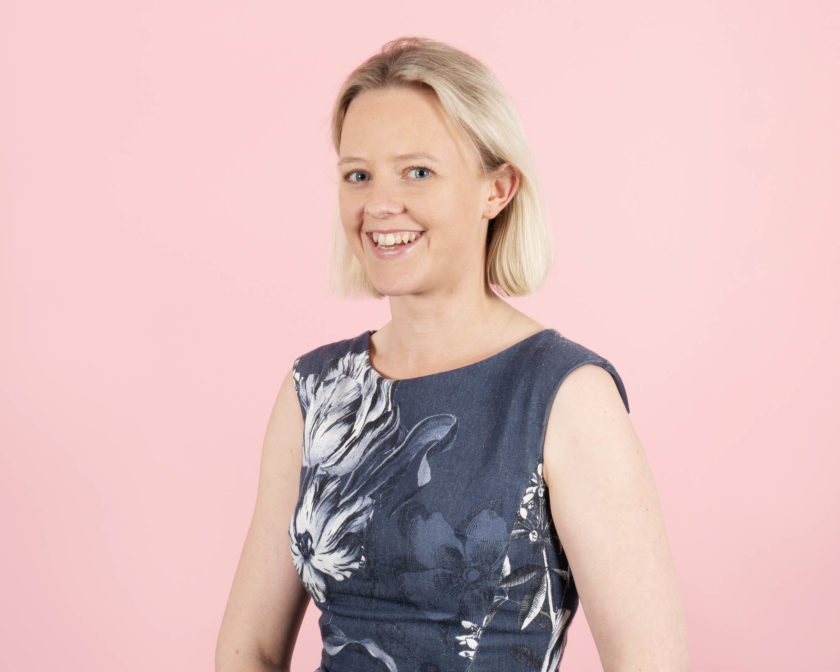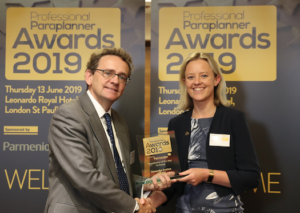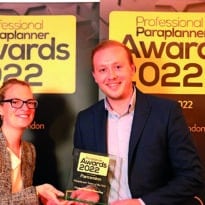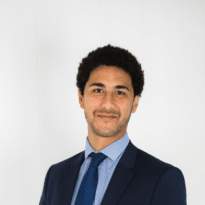Samantha Gratton, senior paraplanner at Old Mill, talked to Rob Kingsbury about how recent structural changes at the firm have improved her role and the benefits when paraplanners are empowered to be self-driven.
Samantha Gratton, Fellow of the CII and senior paraplanner at Old Mill, says the recent changes to the firm’s wealth management team has seen the operational structure go from a linear one, where the consultants (financial planners) had dedicated paraplanners and administrators, to one which works on a pooled basis. This, she says, has been a “fantastic” move for the firm.
“The consultants continue to be focussed on the end clients, building relationships and bringing in new business, supported by individual client managers, and pooled teams of client service associates (administrators) and paraplanners.
“With the new structure, if someone within the team is away from work for any reason and an urgent item comes in, there is a whole bank of people to call upon. It has also helped to broaden our exposure and experience with the clients we are working for and we are able to share information and discuss best practice more easily as a paraplanning team – I feel like we are really gelling.”
One of the benefits for Samantha on a personal level has been a freeing up of some of her time to help train a new paraplanner. “Some of the technical work that I used to do has been divided around the team, which has allowed me to spend time on training sessions. It’s been great for me as I’ve really enjoyed it and I think it’s also going to be good for the business as it opens up opportunities for people to develop other skills.”
Finding the right fit
Samantha took a Master’s degree in Business Studies at Edinburgh University, from where she went to work for ‘Top 4’ accountancy firm Deloitte as an auditor, going into businesses to audit their processes. “I’m ambitious and dedicated and I thought I’d love the corporate environment,” she says, “but after 10 months there I knew it wasn’t quite right for me.” She moved to Lloyds Banking Group, working at its head office in Edinburgh, which was a small office consisting of the Heads of Division. There she worked with spreadsheets, producing year end and half year reporting documents. “The office was full of interesting and dedicated people and I saw how hard some people work,” she says. “They would start at 5 o’clock in the morning and go on until after midnight. We all had to put in the extra hours.”
After 14 months she decided to move back to her roots in the West Country, joining Old Mill. It has been the right fit for her, as she has been there for nearly nine years.
“What I learned from my experience is that while you might think a particular job will suit you, not to worry if it doesn’t, because when you are young there is plenty of time and in due course what you learn along the way will help you to find where you fit best.”
When she joined Old Mill, Samantha says, it was “a small and ambitious firm”, which has since capitalised on its ability to offer financial planning, specialist tax advice and accountancy all under one roof. The firm now has four offices and over 300 people working for it. As part of the recent structural change it brought its different back-office systems together in one system (the first UK firm to do so, it says), enabling it to operate a single client relationship management system across the whole firm.
Samantha says she has benefitted from having the different areas of expertise close to hand within the firm – “it’s really helped broaden my technical knowledge”.
However, she started at the firm in an admin role, helping with the processing of new business. The year before the firm had set up its own model portfolio service run via the Ascentric platform with approximately £600 million under management; it celebrated its 10 year anniversary in 2019. With her love of spreadsheets, Samantha began helping in this area. “We do all the dealing and administration in house, which means we can deal quickly with client needs and queries.”
Working in that area, Samantha says, reinforced her auditing training. “Pay attention to detail, take nothing at face value, check and check again and never be afraid to ask questions.”
Self-driven
After 18 months with the company Samantha had the opportunity to work for a consultant who was without direct paraplanning support. She began writing letters and undertaking other paraplanning tasks. This was not something she was asked to do by the firm, she says, but rather self-driven through her desire to progress and do more within the firm.
“I am lucky in that as an ambitious, forward-looking company, Old Mill is very open to suggestions and people looking to develop their skills and talent. It’s enabled me to first become a paraplanner, and now to take on new areas like training.”
She then began working with two of the younger consultants who at the time were paraplanners. “They were very competitive and it was a great atmosphere as they drove each other to do better and I learned a lot about being focussed and the commercial side of the firm.” Those consultants are now shareholders and directors with the firm.
A “self-confessed geek, who loves exams”, Samantha worked through her qualifications to attain Chartered Financial Planner status, being awarded Best Completion of the Certificate in Financial Planning and a distinction with best AF5 paper along the way.
She is now looking at further exams to take in order to add to her experience. She believes there is scope for paraplanners to become specialists, alongside financial planners. As an example, she says she would like to seek accreditation by the Society of Later Life Advisers. “We have SOLLA accredited consultants and I think having paraplanners who are also formally trained in later life advice could be good for financial planning firms.”
In terms of her own self-drive and development, Samantha says that while typically at Old Mill paraplanners do not attend client meetings, the chance opportunity to do so changed her view of the role. It arose when a consultant had an accident and was off work for a period. “It was important that clients continued to be serviced, so where they had already been given the advice, I was able to arrange to meet or follow up with them so they were not left waiting for information and the process could continue.”
When the consultant returned to work, Samantha drove him to client meetings. “This really was eye opening. To see the client relaxed at home, surrounded by their photographs, you could better understand what made them tick, and what drives them as people.
“I’m someone who likes to provide a 5-Star service, whether that is to the planner, client or Old Mill, and having that opportunity gave me a lot more insight and made me enjoy the job more too.”
She urges other paraplanners to meet with clients in this way. “If your firm is one where typically you don’t meet clients, ask if you can attend a couple of client meetings, or to help in meetings by explaining the technical aspects to the client. All too often as paraplanners we can become stuck behind our screens. It’s a way both of learning by pushing ourselves beyond our comfort zones and it’s a reminder of why we do the job – the client.”
Growing influence of paraplanners
Samantha believes that the influence of paraplanners is growing and will continue to do so; also that for those that have the drive to do more, there is huge opportunity.
“There is no way that everyone can be an expert in everything, so it makes sense for financial planners to focus on the client relationships and winning new business.
“Paraplanners are becoming essential members of the team back in the office checking the technical aspects and helping to develop and review the advice. Also, they are becoming ever more important to businesses and the paraplanning role is being seen as important in its own right not just as part of the route into being a financial planner.”
This is particularly so where a firm is delivering holistic financial planning, she says. “Our consultants have to have a strong relationship with their clients to deliver this kind of service. They are helping clients in ways that were not expected before – it’s more life coaching.”
She believes the market will become tougher in the years to come as online advice companies finally begin making in-roads into the traditional adviser space. “Financial advice firms are going to have to offer something unique and different to attract and keep clients. That is going to need strong paraplanning support so the financial planners can focus on the client and are ready for the opportunities when they get them.”
Samantha scooped the Paraplanner of the Year (In-house) award at this year’s Professional Paraplanner Awards






























